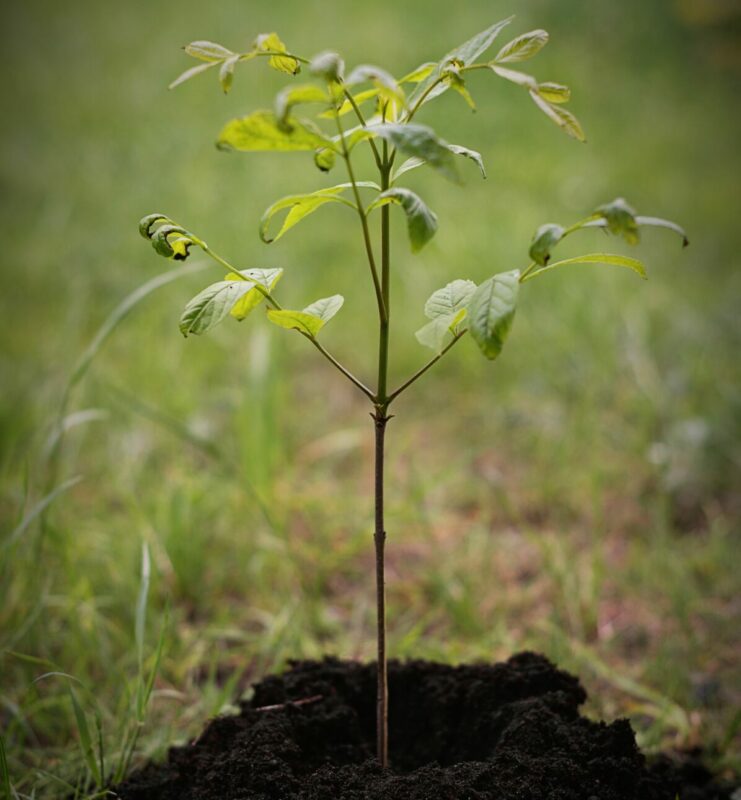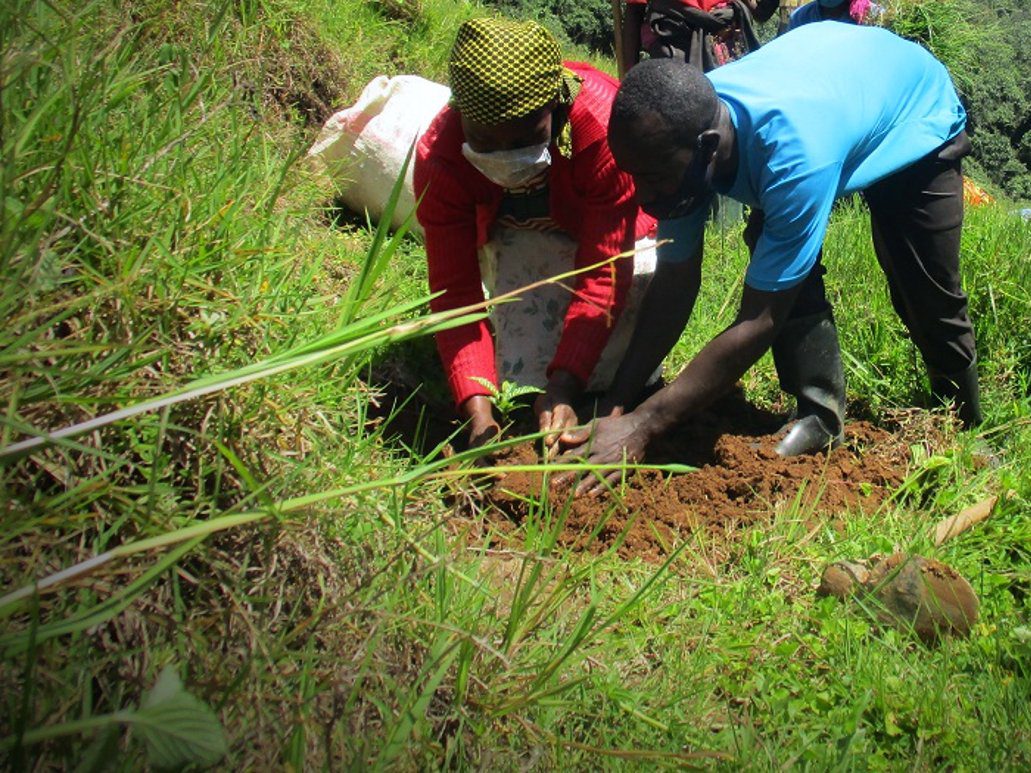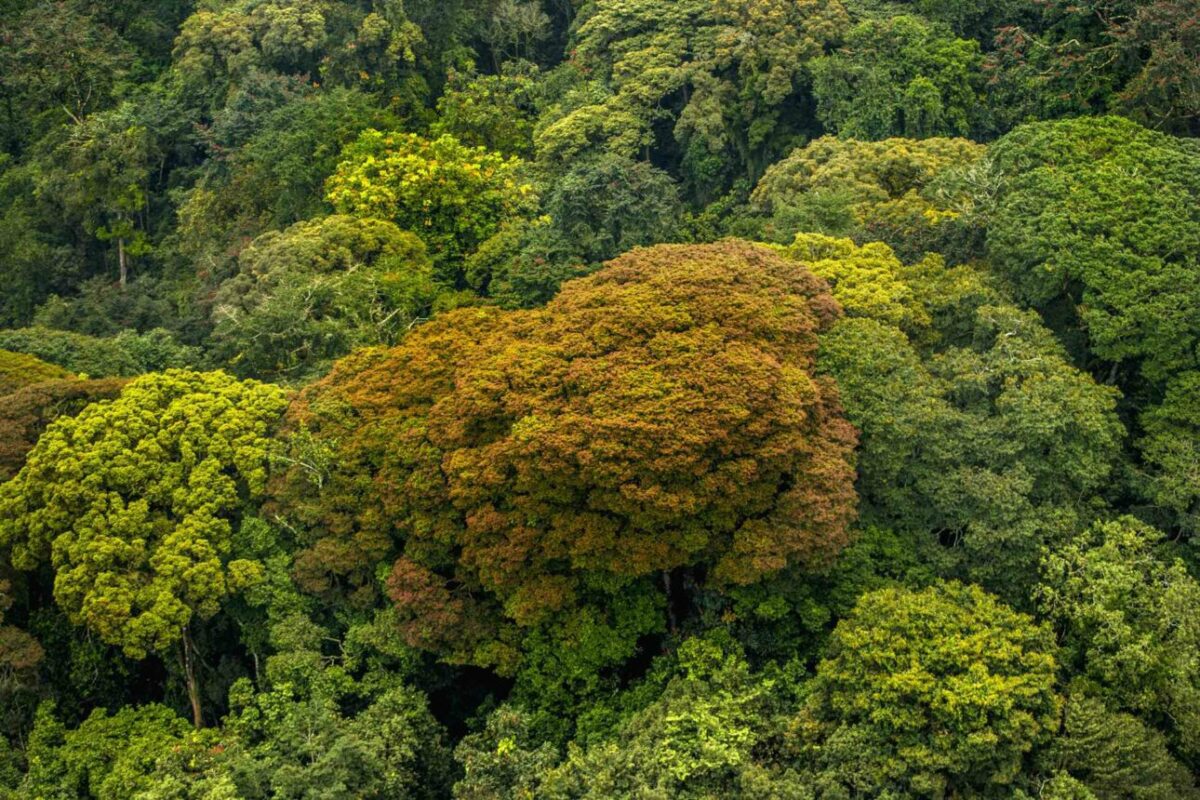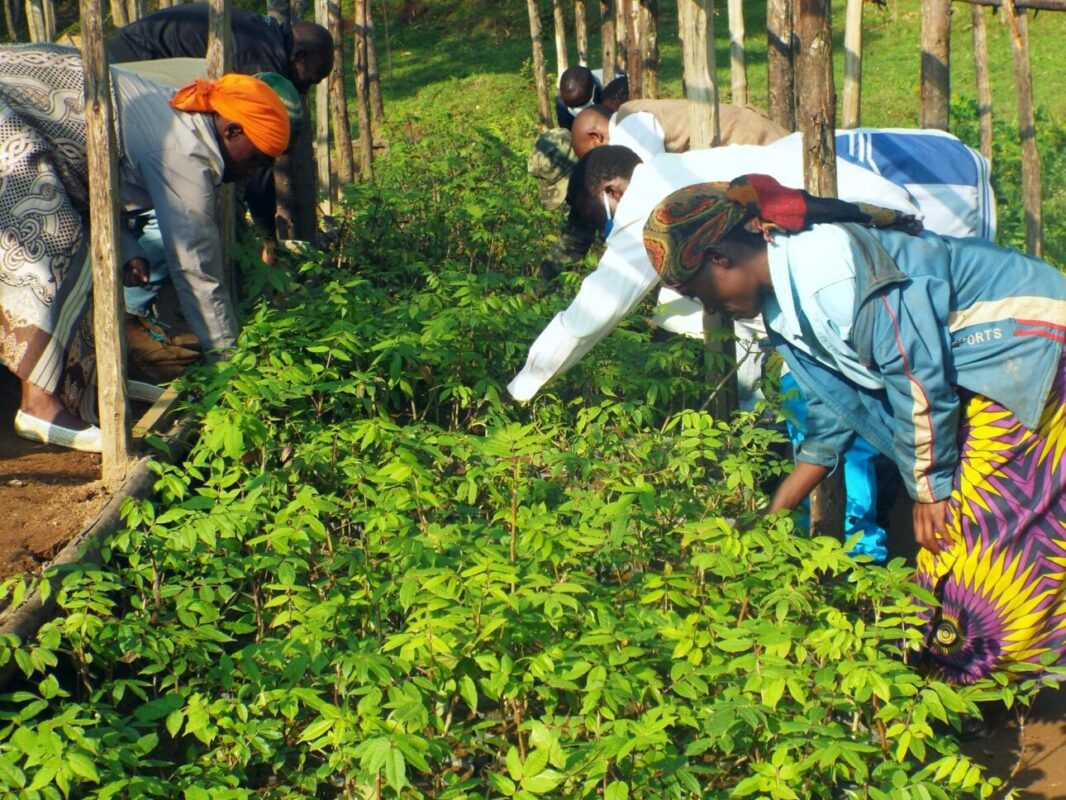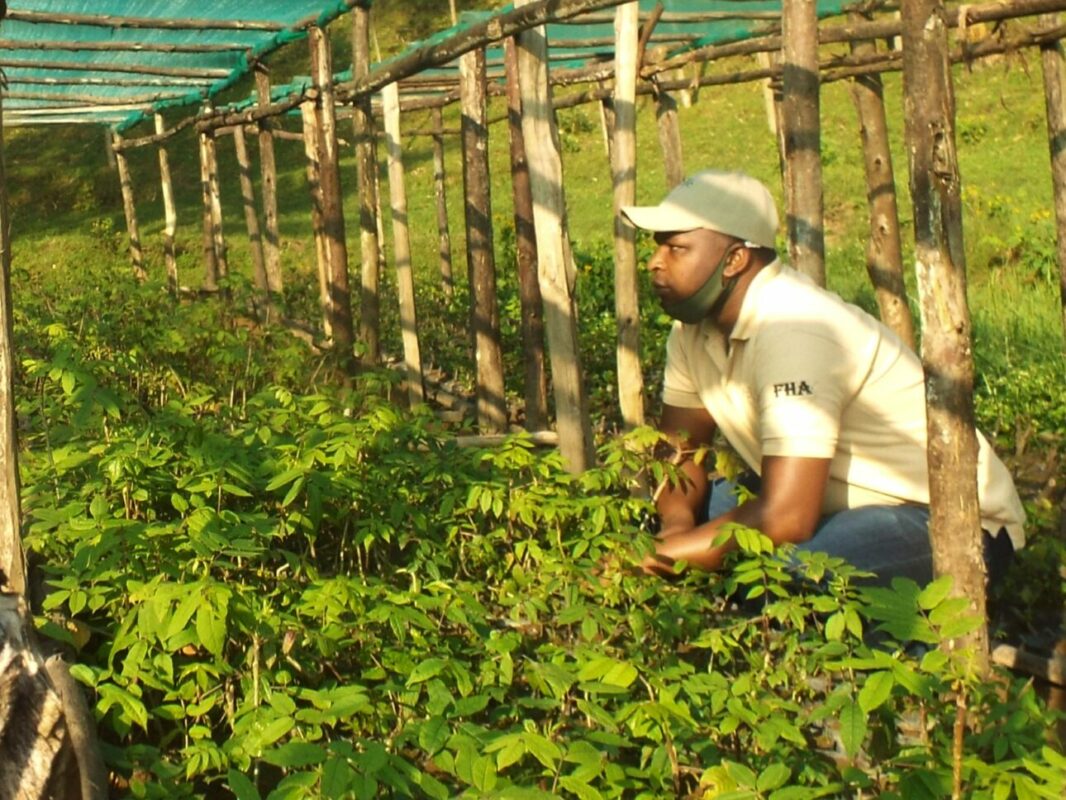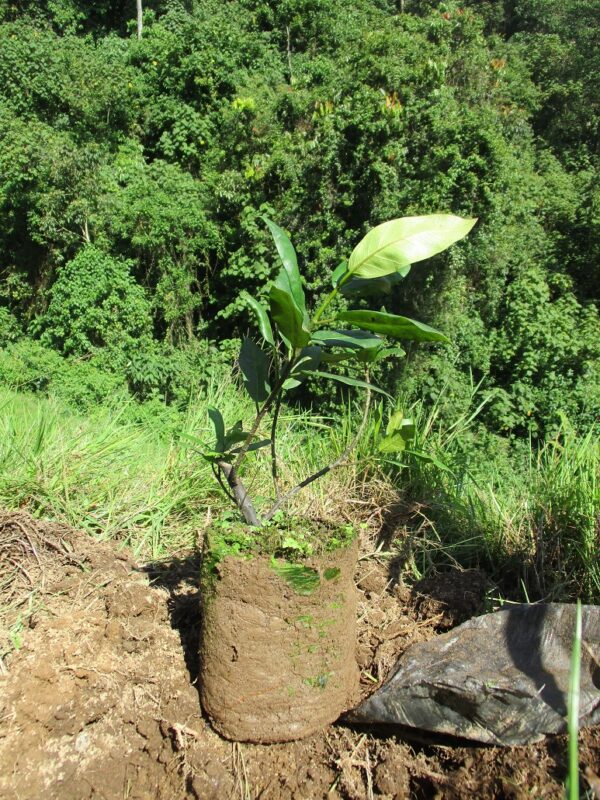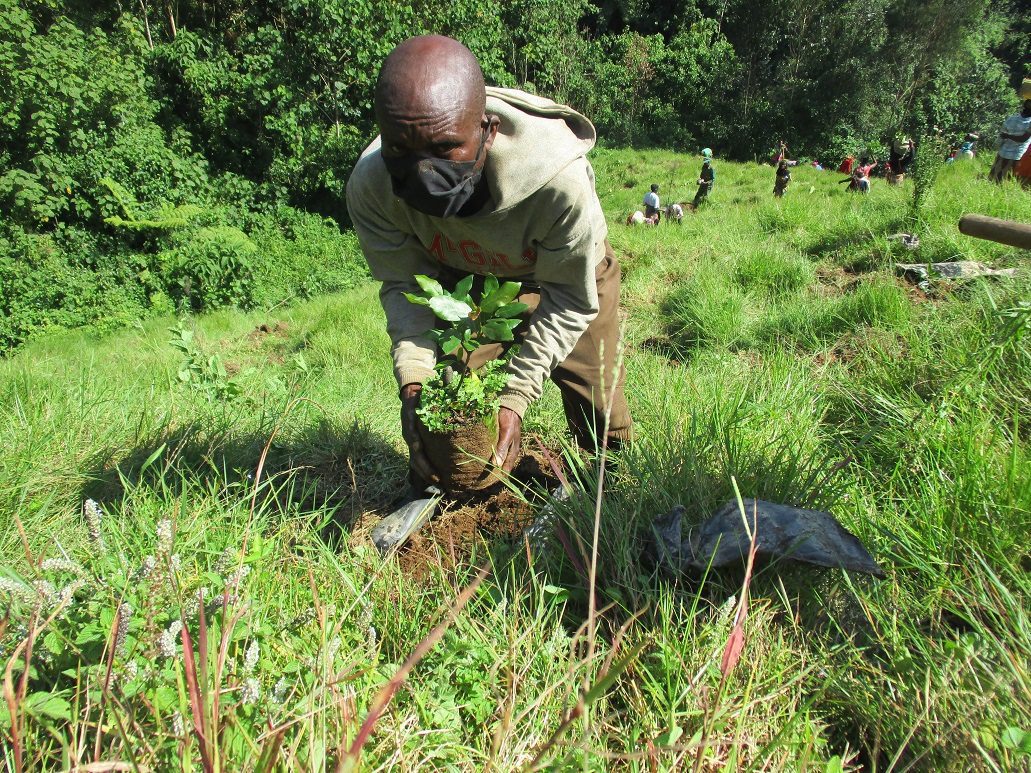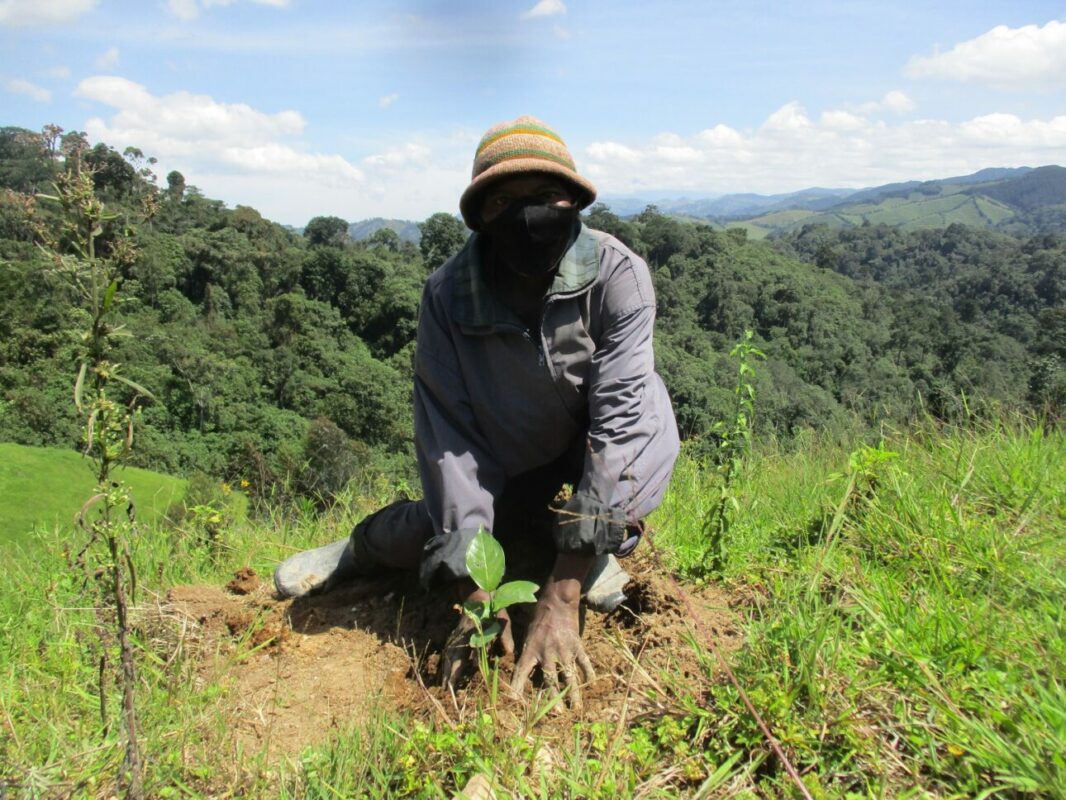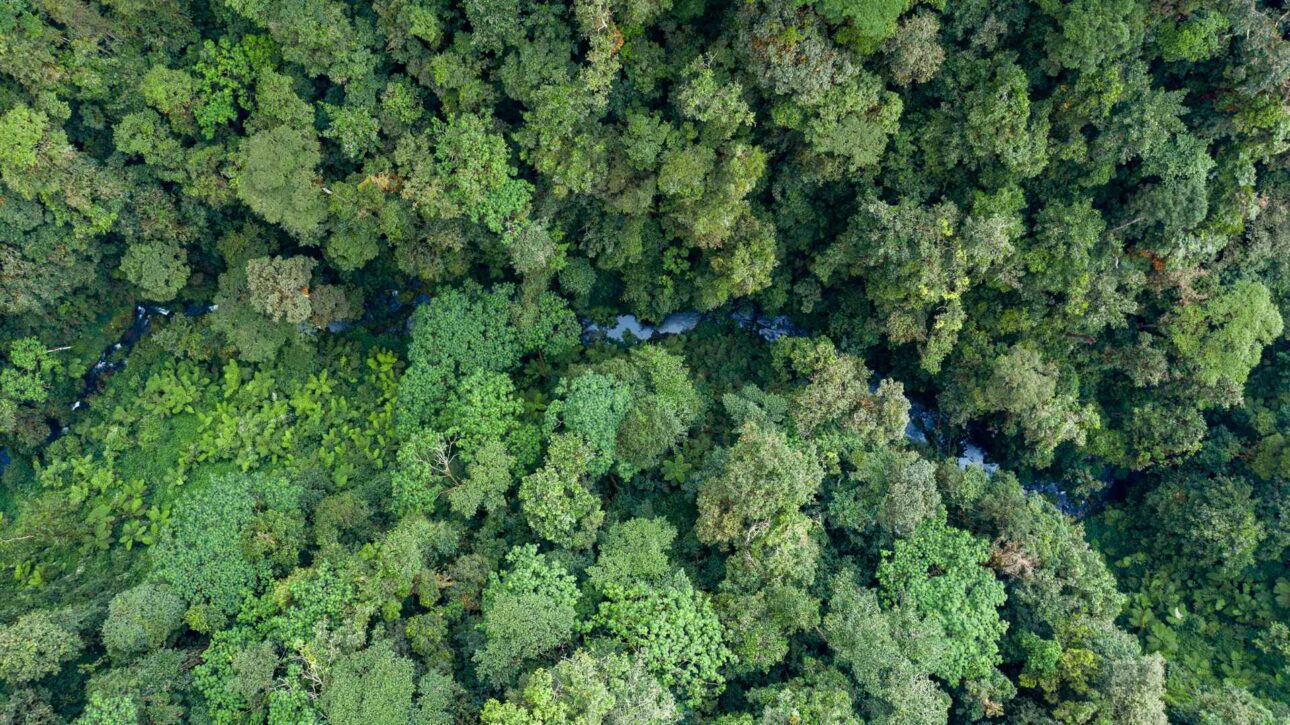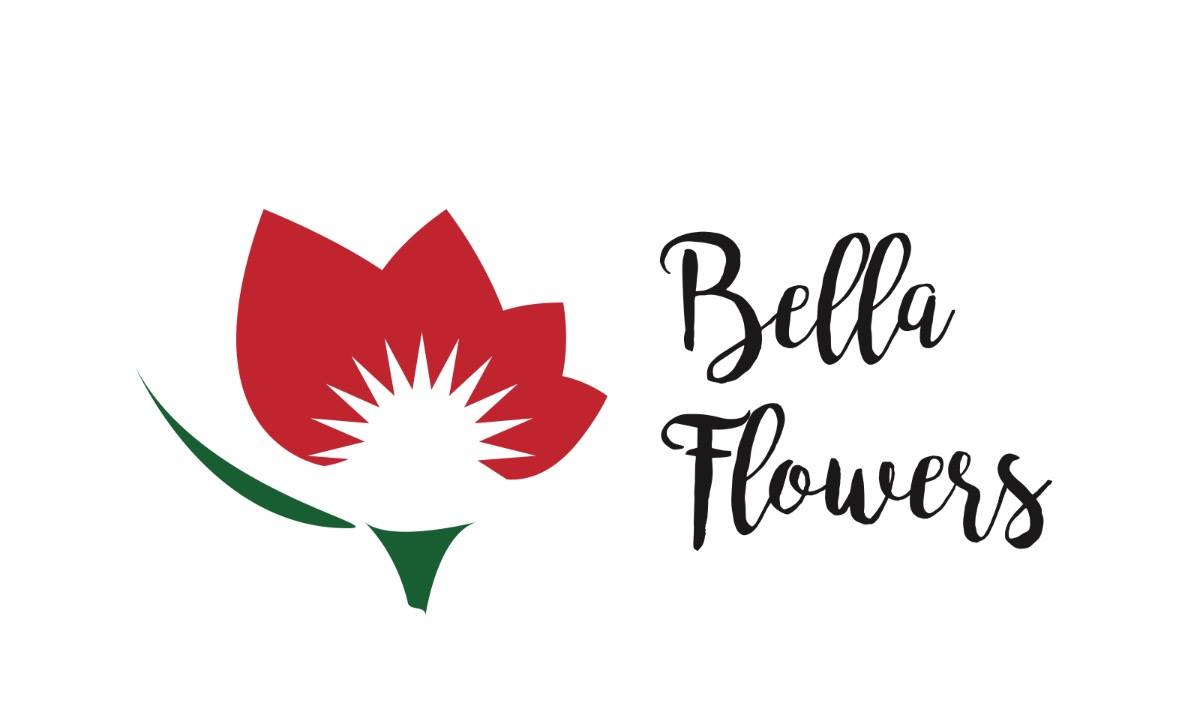By planting a tree in Gishwati, you contribute towards the restoration of the rain forest, binding of carbon from the atmosphere, the conservation of habitat for hundreds of species and eco-system services for thousands of people.
Gishwati Forest has a long history of deforestation. War, mining, farming and firewood collection have all taken their toll on the forest. The size of the original forest has been decreased by 98% since 1970. The loss of the rainforest has not only caused a loss off habitats for flagship species such as the eastern chimpanzee, endemic orchids and Albertine endemic bird species. The natural forest also provides a range of different eco system services. Not only does the forest sequester and store large amounts of carbon dioxide from the air. The forest also serves the surrounding farmland by absorbing and slowly releasing rainwater and preventing the topsoil to be washed away. The forest cover prevents landslides and creates a stable microclimate. It also produces organic material that enriches the soil and recycles vital soil nutrients without the need for expensive chemical fertilizers. The forest is a continuing source of birds, bats, and insects that pollinate crops and control insect pests.
Many severe effects from the degradation of the forest can be felt not only locally but also far away. The Sebeya River which originates in Gishwati Forest provides a lifeline to thousands of people downstream, generating electricity, feeding several tea plantations and is a source of water for Braliwra in Rubavu, Rwanda’s largest beer brewery. Without the cleansing and absorbing effects of the forest, the rainwater flows straight off the land and into the river causing regular floods and further erosion. The previously clean river is now red with silt and chemical nutrients which eventually end up in Lake Kivu. Flooding, landslides, erosion, decreased soil fertility, decreased water quality, and heavy river siltation, all aggravate poverty. Conservation of Gishwati Forest and restoring ecosystem services in the area will reduce many of these issues.
Your Contribution
Gishwati Mukura National Park is under the management of Rwanda Development Board through a partnership with IMIZI ECO TOURISM DEVELOPMENT LTD (trading as Wilderness Safaris Rwanda), and Forest of Hope Association. Rwanda Development Board is overseeing the park while Wilderness Safaris is managing the tourism activities in the park. Forest of Hope Association is a local NGO supporting conservation and restoration activities. Your contribution is going to Forest of Hope Association’s activities in Gishwati Forest and will be used for the purchase and reforestation of land within Gishwati Mukura National Park. Funds are used to raise indigenous tree species at the local tree nursery which are planted on the repurchased land.
Current area for reforestation
The priority area for reforestation is a 138-ha area between the three fragmented forest areas. Gishwati is fragmented into three areas: The core forest, the 2008 demarcation and the 2009 reforested Kinyenkanda Area. Only a small forest strip of a few meters connects the areas at some points. These small corridors make it very hard for the larger animals such as primates to migrate between different areas. Fruits, flowers and shoots which these primates rely on are found in different areas at different times of the year. Some primates refer to raiding farm crops in the drier seasons due to the lack of food in the forest.
Reforestation of the priority area connects the three fragmented areas into one cohesive forest. This enables larger animals to sustain themselves more easily and allows for a larger population. As funds are made available, repurchasing and replanting of the forest closest to the thin corridor done, continuously increasing the size of the forest and merging of the segregated areas.
Gishwati Forest has a long history of deforestation. War, mining, farming and firewood collection have all taken their toll on the forest. The size of the original forest has been decreased by 98% since 1970. The loss of the rainforest has not only caused a loss off habitats for flagship species such as the eastern chimpanzee, endemic orchids and Albertine endemic bird species. The natural forest also provides a range of different eco system services. Not only does the forest sequester and store large amounts of carbon dioxide from the air. The forest also serves the surrounding farmland by absorbing and slowly releasing rainwater and preventing the topsoil to be washed away. The forest cover prevents landslides and creates a stable microclimate. It also produces organic material that enriches the soil and recycles vital soil nutrients without the need for expensive chemical fertilizers. The forest is a continuing source of birds, bats, and insects that pollinate crops and control insect pests.
Many severe effects from the degradation of the forest can be felt not only locally but also far away. The Sebeya River which originates in Gishwati Forest provides a lifeline to thousands of people downstream, generating electricity, feeding several tea plantations and is a source of water for Braliwra in Rubavu, Rwanda’s largest beer brewery. Without the cleansing and absorbing effects of the forest, the rainwater flows straight off the land and into the river causing regular floods and further erosion. The previously clean river is now red with silt and chemical nutrients which eventually end up in Lake Kivu. Flooding, landslides, erosion, decreased soil fertility, decreased water quality, and heavy river siltation, all aggravate poverty. Conservation of Gishwati Forest and restoring ecosystem services in the area will reduce many of these issues.
Your Contribution
Gishwati Mukura National Park is under the management of Rwanda Development Board through a partnership with IMIZI ECO TOURISM DEVELOPMENT LTD (trading as Wilderness Safaris Rwanda), and Forest of Hope Association. Rwanda Development Board is overseeing the park while Wilderness Safaris is managing the tourism activities in the park. Forest of Hope Association is a local NGO supporting conservation and restoration activities. Your contribution is going to Forest of Hope Association’s activities in Gishwati Forest and will be used for the purchase and reforestation of land within Gishwati Mukura National Park. Funds are used to raise indigenous tree species at the local tree nursery which are planted on the repurchased land.
Current area for reforestation
The priority area for reforestation is a 138-ha area between the three fragmented forest areas. Gishwati is fragmented into three areas: The core forest, the 2008 demarcation and the 2009 reforested Kinyenkanda Area. Only a small forest strip of a few meters connects the areas at some points. These small corridors make it very hard for the larger animals such as primates to migrate between different areas. Fruits, flowers and shoots which these primates rely on are found in different areas at different times of the year. Some primates refer to raiding farm crops in the drier seasons due to the lack of food in the forest.
Reforestation of the priority area connects the three fragmented areas into one cohesive forest. This enables larger animals to sustain themselves more easily and allows for a larger population. As funds are made available, repurchasing and replanting of the forest closest to the thin corridor done, continuously increasing the size of the forest and merging of the segregated areas.

